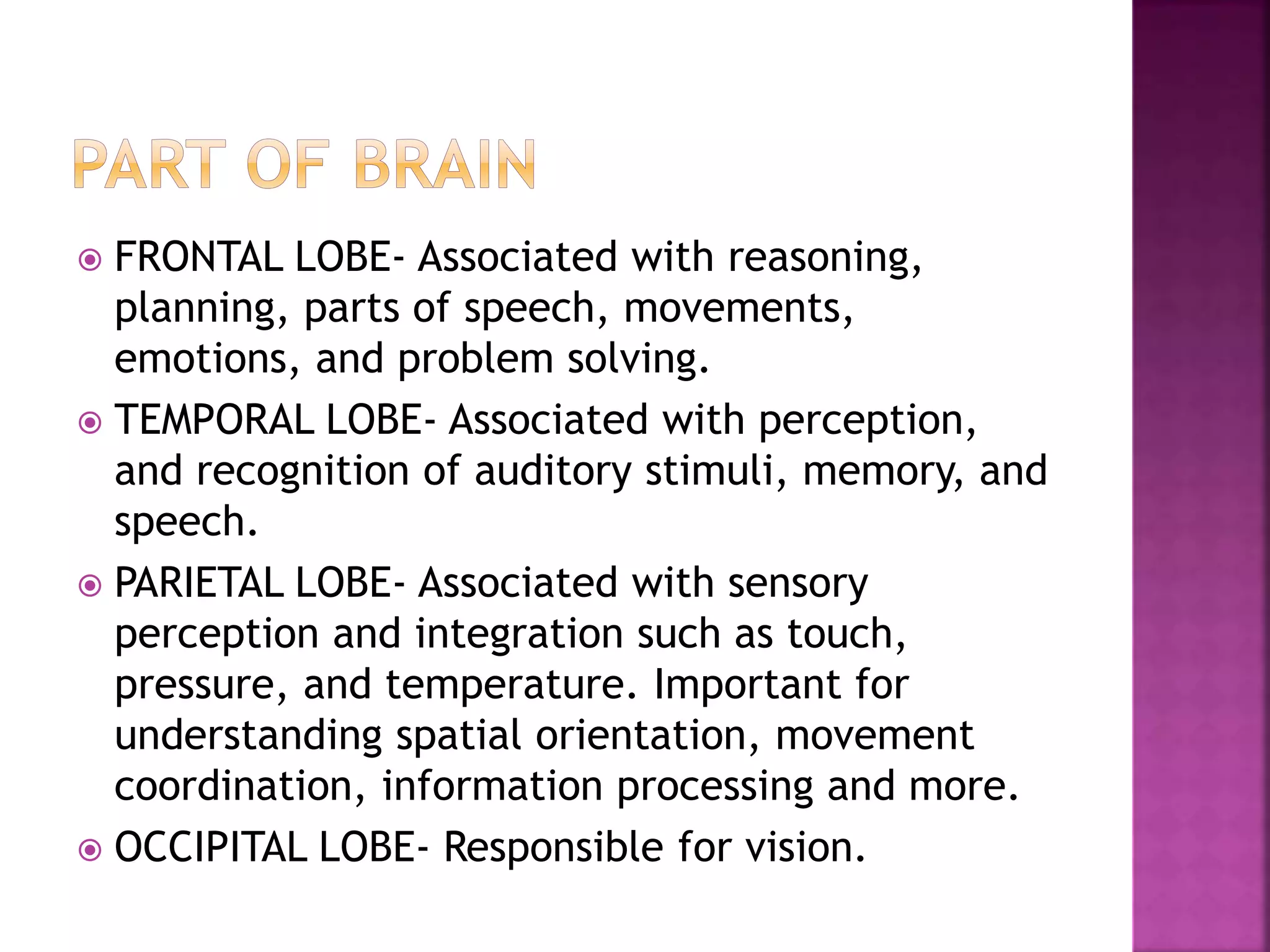The nervous system controls and coordinates all functions of the human body. It is composed of the central nervous system, made up of the brain and spinal cord, and the peripheral nervous system, consisting of nerves that connect to the rest of the body. The nervous system uses neurons to transmit signals as electrical and chemical impulses to regulate bodily functions like movement, senses, breathing, thinking, and more. Damage or diseases of the nervous system can impair these functions.


























